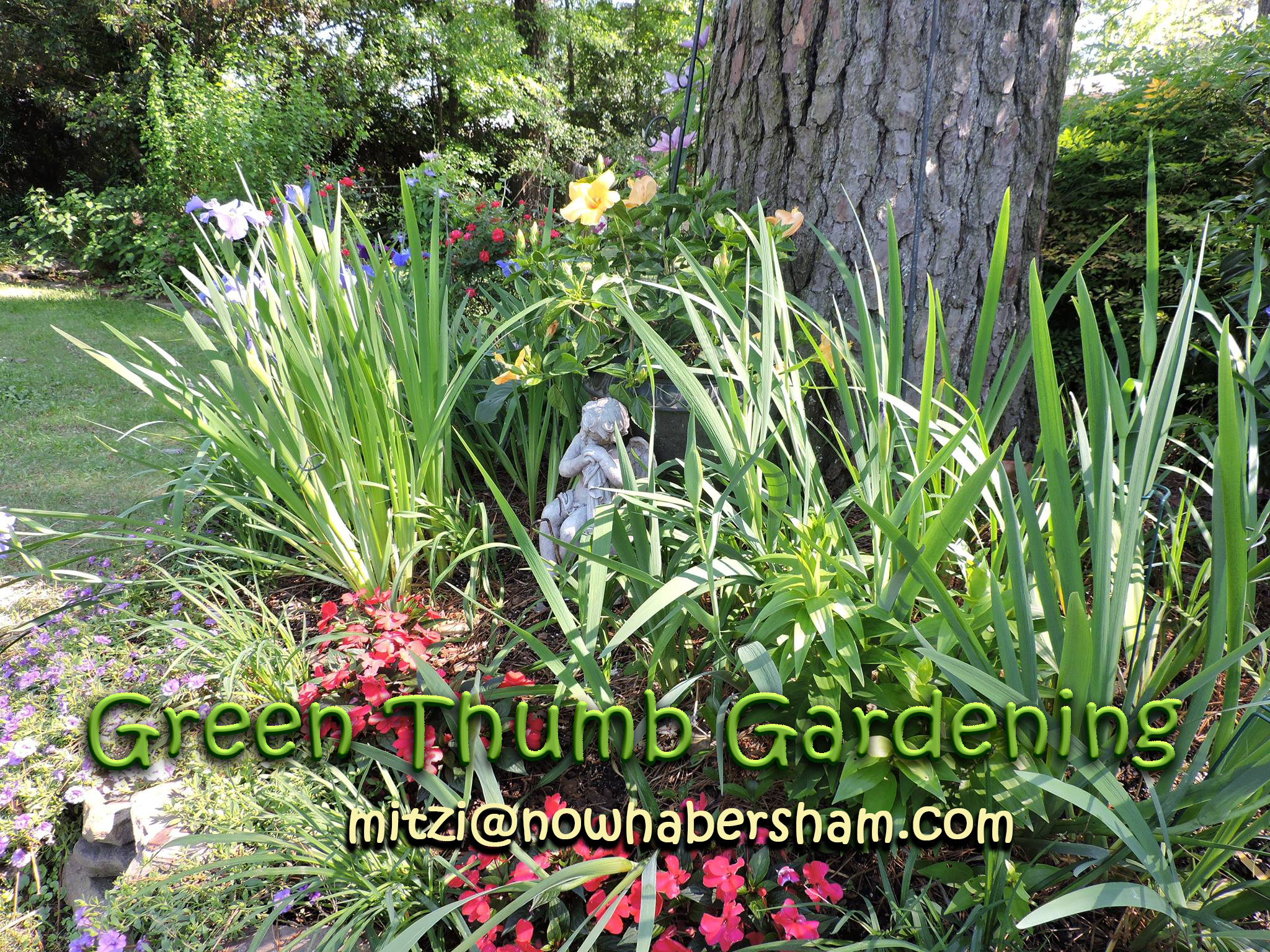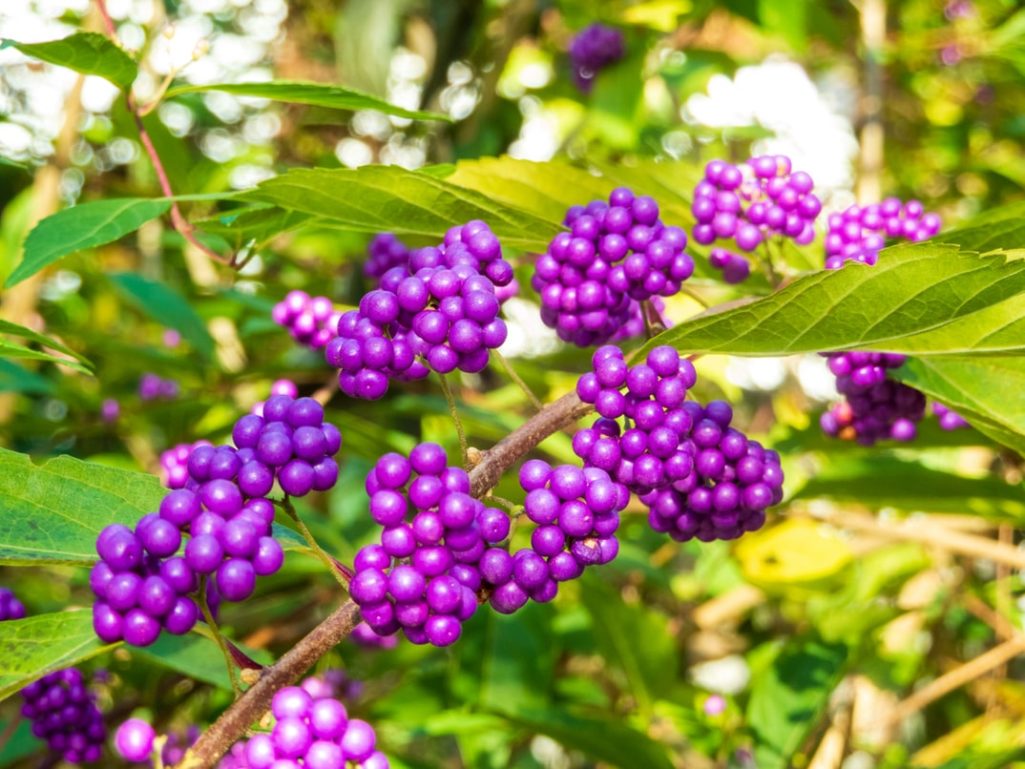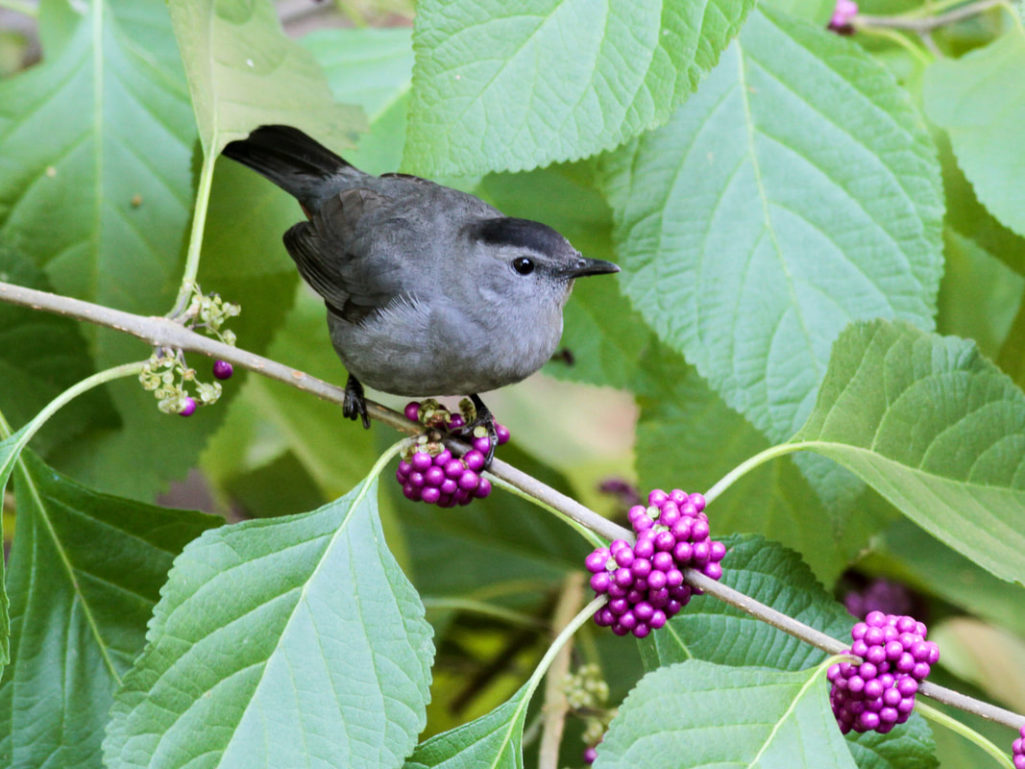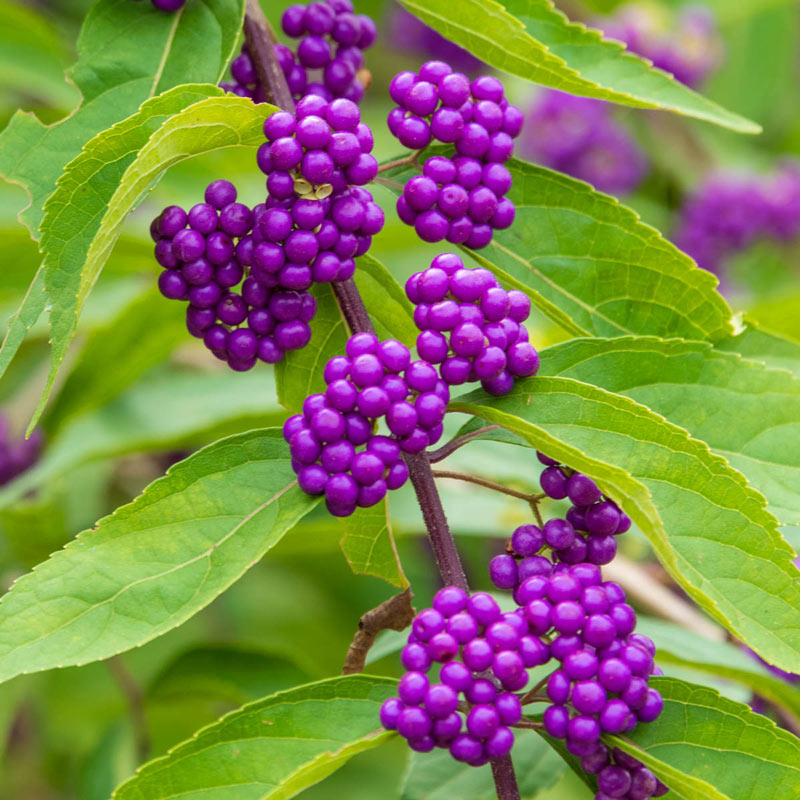
In mid-autumn, when the floral display in the garden is winding down, shrubs and trees that bear colorful fruits and berries keep the show going well into winter. One plant stands out from the rest with its luminous purple berries. One look at the colorful berry display and it becomes abundantly clear how this shrub got its common name of beautyberry.
If any plant can provide much appreciated bling in the autumn garden, its beautyberry. It’s a showstopper that never fails to draw lots of admiring glances from passersby. Beautyberry is an ordinary looking shrub in spring and early summer. The simple flowers which bloom are charming but small and not particularly showy. From a distance, they are barely noticeable.
However, this plant undergoes an amazing transformation once the berries start to ripen in late summer. Little clusters of greenish-looking, pearl-like berries that grace the entire length of each branch start turning the most extraordinary shades of vibrant purple. Some people describe the color as metallic purple. 
I was gifted one. I’m quite sure the birds in my yard or neighborhood delivered it because there is no other explanation as to its presence. This is the first year I’ve seen the beautiful berries on this shrub that probably spans 5 feet wide and 5 to 6 feet tall and it is loaded with berries.
Caring for the beautyberry
Unless the birds deliver one to your yard, you could always visit a garden center and buy one or more to plant.
Beautyberries are long-lived shrubs and ideally should be planted in loose, fertile, well-drained soil in full sun. Once established, they are reasonably drought tolerant. However, under extreme drought conditions, they may drop their leaves and berries in order to compensate for the lack of moisture. Beautyberry does well in either partial shade or in sunny locations but the plant will have a denser habit and will produce more fruit in a sunny location. Give it plenty of room in the landscape. The weight of the berries can cause the branches to bend over, which may either shade or crowd other nearby plantings.
Beautyberry flowers on current year’s growth. For the best berry display, cut the shrub back in late winter or early spring to a low permanent framework about six inches high. This shrub may spread out or become rangy over time. If that becomes an issue, the plant will respond well to renovation pruning, in which all flowering stems should be cut back to the base of the plant.
Providing a feast

The berries appear in the late summer or early fall and can persist into winter, providing visual interest for the landscape and food for birds and other wildlife. The berries are edible for people also and some even use them to make jelly and other foods. In the fall, beautyberry foliage turns yellow, though frost can cause the leaf color to pass directly from green to brown before the leaves drop for winter.
Perhaps this solves the mystery of the origin of my beautyberry bush. The birds that are attracted to my birdfeeders wanted an additional buffet going in to the colder months.

